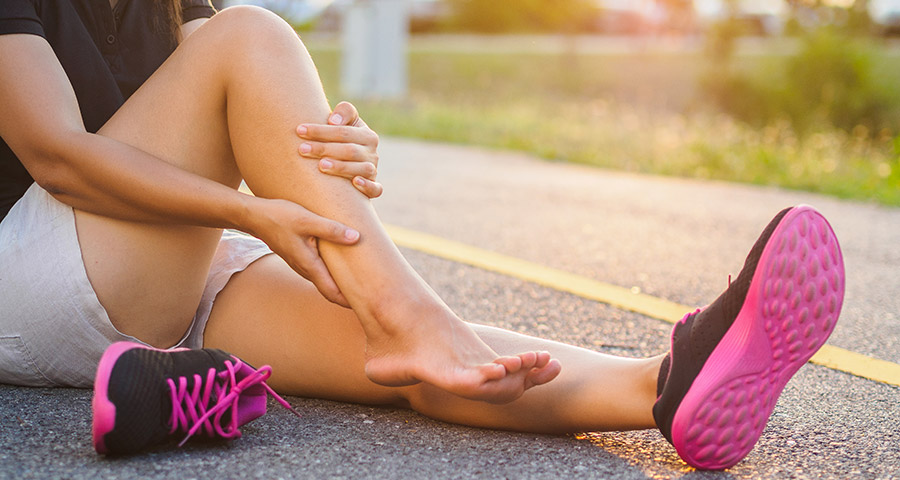
Is that a rock in my shoe? Overuse injuries can cause heel and foot pain.
Weekend warriors, aerobics enthusiasts and even folks who are just getting back into exercise are no strangers to pains and strains.
When it comes to foot pain, there are two common issues:
- Pain in the back of the heel may be the result of Achilles tendonitis, which can be caused by an overuse injury.
- Pain on the bottom of the foot may be caused by plantar fasciitis – a result of inflammation in the fascia, a connective tissue, which in this case stretches between your heal and toes.
In both cases, the pain is a culmination of irritation over time, rather than an acute injury, like a sprain.
“The expression ‘no pain, no gain’ can be dangerous,” said Dr. Adam Ferguson, an orthopaedic surgeon specializing in the foot and ankle at the Connecticut Orthopaedic Institute at MidState Medical Center. “You should always listen to your body. If something doesn’t feel right, give it some rest.”
In about 35 percent of cases, these injuries occur in people who exercise a few days a week, but body mechanics, shoe fit, age, gender, foot shape, your occupation and your weight can also play a role.
It is rare for an Achilles tendon or the fascia in the foot to rupture, but cortisone injections can increase the risk of rupture.
Both tendonitis and fasciitis can cause bone spurs – bumps of extra bone that grow in an injured area. Bone spurs are not usually the cause of the pain. Instead, they are typically the result of the irritated soft tissues. Removing bone spurs rarely fixes the issue.
Fortunately, Achilles tendonitis and plantar fasciitis can be prevented, or at least mitigated. In both cases, rest, stretching and non-steroidal anti-inflammatory medications (NSAIDs) are common treatments. In difficult-to-treat cases, physical therapy, bracing or, in cases resistant to all other forms of treatment, surgery may be required. Splints and orthotics may also be helpful in treating both conditions.
“Patients with pain in the back of the heel or the bottom of the foot that doesn’t go away with rest and NSAIDs after a couple of weeks should call their doctor,” said Dr. Ferguson. “There are effective treatments outside of surgery that can be used to manage overuse injuries of the foot. If surgery is required, the Connecticut Orthopaedic Institute is uniquely positioned to not only treat the problem, but also provide an exceptional experience geared toward the unique needs of each patient.”
Gradually increasing your activity, wearing properly fitting shoes, incorporating stretching in your routine, maintaining a healthy weight, and alternating activities are effective ways to prevent overuse injuries. Sometimes, foot pain caused by overuse injuries can take up to six months to resolve.
